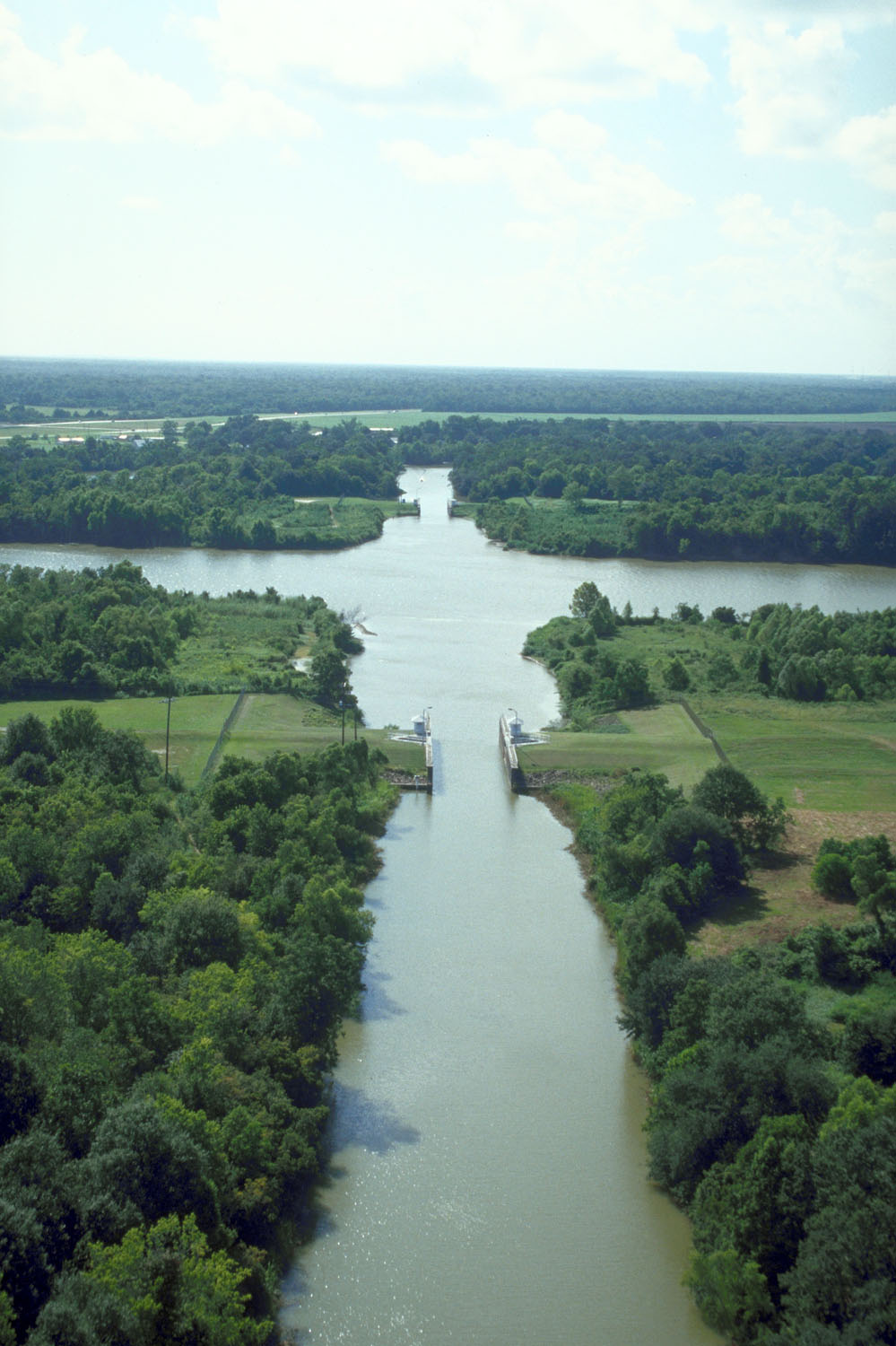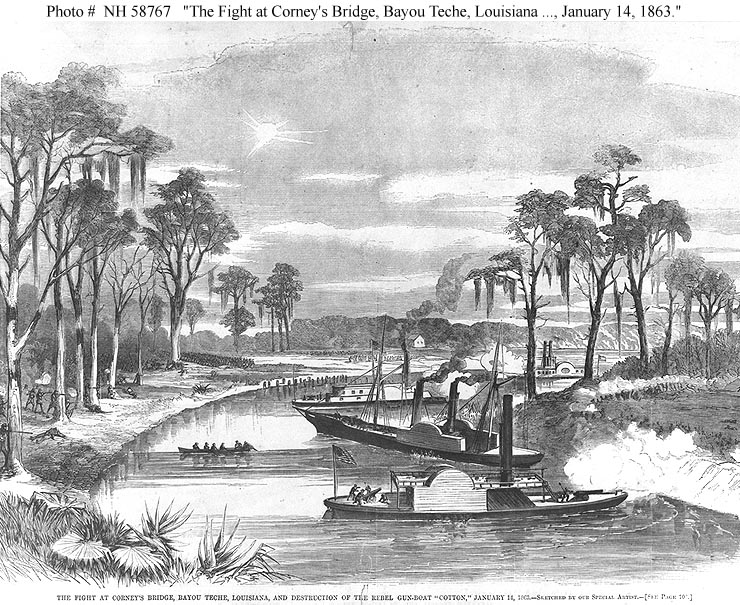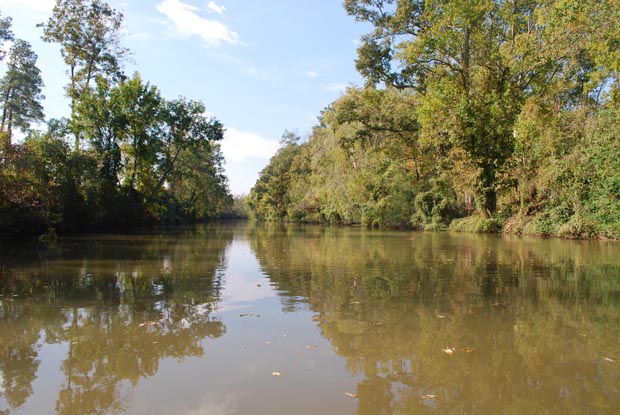Bayou Teche on:
[Wikipedia]
[Google]
[Amazon]
 Bayou Teche (
Bayou Teche (
The National Map
, accessed June 20, 2011 waterway of great cultural significance in south central
 The second engagement occurred on 14 January 1863. Union general
The second engagement occurred on 14 January 1863. Union general 

 Bayou Teche (
Bayou Teche (Louisiana French
Louisiana French ( frc, français de la Louisiane; lou, françé la lwizyàn) is an umbrella term for the dialects and varieties of the French language spoken traditionally by French Louisianians in colonial Lower Louisiana. As of today Louisi ...
: ''Bayou Têche'') is a U.S. Geological Survey. National Hydrography Dataset high-resolution flowline dataThe National Map
, accessed June 20, 2011 waterway of great cultural significance in south central
Louisiana
Louisiana , group=pronunciation (French: ''La Louisiane'') is a state in the Deep South and South Central regions of the United States. It is the 20th-smallest by area and the 25th most populous of the 50 U.S. states. Louisiana is borde ...
in the United States
The United States of America (U.S.A. or USA), commonly known as the United States (U.S. or US) or America, is a country primarily located in North America. It consists of 50 states, a federal district, five major unincorporated territori ...
. Bayou Teche was the Mississippi River
The Mississippi River is the second-longest river and chief river of the second-largest drainage system in North America, second only to the Hudson Bay drainage system. From its traditional source of Lake Itasca in northern Minnesota, it fl ...
's main course when it developed a delta about 2,800 to 4,500 years ago. Through a natural process known as deltaic switching, the river's deposits of silt
Silt is granular material of a size between sand and clay and composed mostly of broken grains of quartz. Silt may occur as a soil (often mixed with sand or clay) or as sediment mixed in suspension with water. Silt usually has a floury feel ...
and sediment
Sediment is a naturally occurring material that is broken down by processes of weathering and erosion, and is subsequently transported by the action of wind, water, or ice or by the force of gravity acting on the particles. For example, sa ...
cause the Mississippi to change its course every thousand years or so.
History
The Teche begins in Port Barre where it draws water from Bayou Courtableau and then flows southward to meet the LowerAtchafalaya River
The Atchafalaya River ( french: La Rivière Atchafalaya, es, Río Atchafalaya) is a distributary of the Mississippi River and Red River in south central Louisiana in the United States. It flows south, just west of the Mississippi River, and ...
at Patterson. During the 18th-century Acadian migration to the area - then known as the Attakapas region - the Teche was the primary means of transportation.
During the American Civil War
The American Civil War (April 12, 1861 – May 26, 1865; also known by other names) was a civil war in the United States. It was fought between the Union ("the North") and the Confederacy ("the South"), the latter formed by states ...
, there were two gunboat engagements on Bayou Teche. The first of these occurred on November 3–5, 1862. Four Federal gunboats, , , , and , with twenty-seven guns came up the Teche despite weak obstructions placed in the bayou by Confederate
Confederacy or confederate may refer to:
States or communities
* Confederate state or confederation, a union of sovereign groups or communities
* Confederate States of America, a confederation of secessionist American states that existed between 1 ...
General Alfred Mouton. The gunboats engaged the Confederate gunboat near Cornay's Bridge in an exchange that lasted for an hour and a half. The ''J. A. Cotton'' was a wooden steamboat modified with a casemate of timber and cotton bales with a small amount of railroad iron tacked onto the side. Though struck several times, the ''Cotton'' escaped real damage. In the next two days, two other duels occurred, and each time the ''Cotton'' prevailed. That night the Northern ships captured ''A. B. Seaer'', a small Steamer of the Confederate Navy used as a dispatch boat. Five days later, ''Kinsman'' and ''A. B. Seger'' captured and burned steamers ''Osprey'' and ''J. P. Smith'' in Bayou Cheval, Louisiana
Louisiana , group=pronunciation (French: ''La Louisiane'') is a state in the Deep South and South Central regions of the United States. It is the 20th-smallest by area and the 25th most populous of the 50 U.S. states. Louisiana is borde ...
.
 The second engagement occurred on 14 January 1863. Union general
The second engagement occurred on 14 January 1863. Union general Godfrey Weitzel
Godfrey (Gottfried) Weitzel (November 1, 1835 – March 19, 1884) was a German-American major general in the Union army during the American Civil War. He was the acting Mayor of New Orleans during the Union occupation of the city and also captured ...
learned that the ''J. A. Cotton'' was planning an attack on Weitzel's forces at Berwick Bay, Louisiana. Once again ''Kinsman'', ''Calhoun'', ''Estrella'' and ''Diana'' steamed into the Bayou, followed by Union transports. The bayou had been obstructed with debris. The Union gunboats and land-based units engaged the ''J. A. Cotton'' and Confederate infantry in rifle pits. During the battle ''Kinsman'' hit a mine and unshipped her rudder; the ''J. A. Cotton'' was badly damaged, and her crew set her on fire during the night to prevent capture. The Union, however, was unable to hold the Teche, necessitating two more invasions of the Teche country in 1863 and 1864.
The Union
Union commonly refers to:
* Trade union, an organization of workers
* Union (set theory), in mathematics, a fundamental operation on sets
Union may also refer to:
Arts and entertainment
Music
* Union (band), an American rock group
** ''Un ...
eventually pacified the area of Bayou Teche and the Atchafalaya River. Historian John D. Winters reports: "Federal troops collected horses, mules, and sugar in large quantities. Planters who remained began taking the oath o the U.S. governmentand were allowed to make contracts with the Negro
In the English language, ''negro'' is a term historically used to denote persons considered to be of Black African heritage. The word ''negro'' means the color black in both Spanish and in Portuguese, where English took it from. The term can be ...
es to finish their sugar crops."
After the levees were built along the Atachafalaya River in the 1930s, the Teche and the rice
Rice is the seed of the grass species '' Oryza sativa'' (Asian rice) or less commonly ''Oryza glaberrima'' (African rice). The name wild rice is usually used for species of the genera '' Zizania'' and '' Porteresia'', both wild and domesticat ...
farms located along the bayou suffered a drastic reduction in fresh water. Between 1976 and 1982, the United States Army Corps of Engineers
, colors =
, anniversaries = 16 June (Organization Day)
, battles =
, battles_label = Wars
, website =
, commander1 = ...
built a pumping station at Krotz Springs
Krotz Springs is a town in St. Landry Parish, Louisiana, United States, on the Atchafalaya River. The population was 1,198 at the 2010 census, down from 1,219 in 2000. It is part of the Opelousas–Eunice Micropolitan Statistical Area.
His ...
to pump water from the Atchafalaya River into Bayou Courtableau.
The etymology of the name "Teche" is uncertain. One hypothesis is that it comes from "tenche", a Chitimacha
The Chitimacha ( ; or ) are a federally recognized tribe of Native Americans who live in the U.S. state of Louisiana, mainly on their reservation in St. Mary Parish near Charenton on Bayou Teche. They are the only Indigenous people in the st ...
Indian word meaning "snake", related to the bayou's twists and turns resembling a snake's movement. The Chitimacha tell an ancient story of how the snake attacked their villages, and it took many warriors many years to kill it. Where the huge carcass lay and decomposed, the depression it left behind filled with water to become the bayou. Alternatively, George R. Stewart
George Rippey Stewart (May 31, 1895 – August 22, 1980) was an American historian, toponymist, novelist, and a professor of English at the University of California, Berkeley. His 1959 book, ''Pickett's Charge'', a detailed history of the final ...
asserts that it is, "probably a French rendering of Deutsch, the name by which the German colonists of the area would have named their stream. Cf. Allemand German'"
The southern author Harnett Kane in ''The Bayous of Louisiana'' (1943) titles his chapter on the Teche "The Opulent Teche" and terms the Teche "the most handsomely endowed of the bayous."
The sugar plantation Lagonda was established on Bayou Teche by Lewis Strong Clarke
Lewis may refer to:
Names
* Lewis (given name), including a list of people with the given name
* Lewis (surname), including a list of people with the surname
Music
* Lewis (musician), Canadian singer
* " Lewis (Mistreated)", a song by Radiohea ...
, who was also involved in Republican
Republican can refer to:
Political ideology
* An advocate of a republic, a type of government that is not a monarchy or dictatorship, and is usually associated with the rule of law.
** Republicanism, the ideology in support of republics or agains ...
politics in the late 19th century.


Towns on Bayou Teche
Towns along the Teche include: * St. Landry Parish, Louisiana **Port Barre, Louisiana
Port Barre (BAH-ree) is a town in St. Landry Parish, Louisiana, United States. The town began in 1760 as an Indian trading post at the place where Bayou Teche flows out of Bayou Courtableau. The population was 2,055 at the 2010 census, down from ...
**Leonville, Louisiana
Leonville is a town in St. Landry Parish, Louisiana, United States. The population was 1,084 at the 2010 census. It is part of the Opelousas– Eunice Micropolitan Statistical Area.
Geography
Leonville is located at (30.470031, -91.98240 ...
**Arnaudville, Louisiana
Arnaudville is a town in St. Landry and St. Martin parishes in the U.S. state of Louisiana. The St. Martin Parish portion of Arnaudville is part of the Lafayette metropolitan statistical area, while the St. Landry Parish portion is part of th ...
* St. Martin Parish, Louisiana
** Cecilia, Louisiana
**Breaux Bridge, Louisiana
Breaux Bridge (;Jack A. Reynolds. "Breaux Bridge" entry i"Louisiana Placenames of Romance Origin."LSU Historical Dissertations and Theses #7852. 1942. p. 77. french: Pont-Breaux; frc, Pont-(de)-Breaux ) is a small city in St. Martin Parish, Loui ...
**Parks, Louisiana
Parks is a village in St. Martin Parish, Louisiana, United States. The population was 653 at the 2010 census, and 696 at the 2020 population estimates program. It is part of the Lafayette metropolitan statistical area.
History
The exact origin o ...
** St. Martinville, Louisiana
*Iberia Parish, Louisiana
Iberia Parish (french: Paroisse de l'Ibérie, es, Parroquia de Iberia) is a parish located in the U.S. state of Louisiana. At the 2020 census, it had a population of 69,929; the parish seat is New Iberia.
The parish was formed in 1868 duri ...
**Loreauville, Louisiana
Loreauville is a village in Iberia Parish in the U.S. state of Louisiana. The population was 887 at the 2010 census, down from 938 at the 2000 census. It is part of the New Iberia micropolitan statistical area, and the Lafayette metropolitan ...
** Morbihan, Louisiana
**New Iberia, Louisiana
New Iberia (french: La Nouvelle-Ibérie; es, Nueva Iberia) is the largest city in and parish seat of Iberia Parish in the U.S. state of Louisiana. The city of New Iberia is located approximately southeast of Lafayette, and forms part of the La ...
**Jeanerette, Louisiana
Jeanerette () is a city in Iberia Parish, Louisiana, United States. Known as "Sugar City", it had a population of 5,530 at the 2010 census, a decrease of 467 from the 2000 tabulation of 5,997. It is two thirds African American, many of them Creo ...
*St. Mary Parish, Louisiana
St. Mary Parish (french: Paroisse de Sainte-Marie) is a parish located in the U.S. state of Louisiana. As of the 2010 census, the population was 54,650. The parish seat is Franklin. The parish was created in 1811.
St. Mary Parish comprises th ...
**Charenton, Louisiana
Charenton (historically french: Lieu-des-Chetimachas) is a census-designated place (CDP) in St. Mary Parish, Louisiana, United States. The population was 1,903 at the 2010 census. It is part of the Morgan City Micropolitan Statistical Area. ...
** Baldwin, Louisiana
**Franklin, Louisiana
Franklin is a small city in and the parish seat of St. Mary Parish, Louisiana, United States. The population was 7,660 at the 2010 census. The city is located on Bayou Teche, southeast of the cities of Lafayette, () and New Iberia () and ) no ...
** Garden City, Louisiana
** Centerville, Louisiana
**Patterson, Louisiana
Patterson is a city in St. Mary Parish, Louisiana, United States. The population was 6,112 at the 2010 census. It is part of the Morgan City Micropolitan Statistical Area.
History
During the early 19th century, a group of Pennsylvania Dutchm ...
See also
*Bayou Teche National Wildlife Refuge
Bayou Teche National Wildlife Refuge is located in the coastal towns of Franklin, Garden City and Centerville on Bayou Teche in St. Mary Parish, Louisiana, United States. The refuge is forested with bottomland hardwoods and cypress-gum forests. ...
* Louisiana Swamps
*Bo Ackal
Bo or BO may refer to
Arts and entertainment
Film, television, and theatre
* Box office, where tickets to an event are sold, and by extension, the amount of business a production receives
*'' BA:BO'', 2008 South Korean film
* ''Bo'' (film), a ...
, namesake of bridge over Bayou Teche on Lewis Street in Iberia Parish
*Bret Allain Bret or BRET may refer to:
People and fictional characters
* Bret (given name), a personal name, including a list of people and fictional characters
* Bret (surname), a list of people
Other uses
* a regional name for either the brill or the ...
, sugar cane farmer and state senator from St. Mary Parish was reared on Bayou Teche.
References
{{authority control Rivers of Louisiana Rivers of St. Landry Parish, Louisiana Rivers of St. Martin Parish, Louisiana Rivers of Iberia Parish, Louisiana Rivers of St. Mary Parish, Louisiana